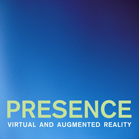Abstract
This paper proposes an innovative framework to explore large audiovisual archives using Immersive Environments to place users inside a dataset and create an embodied experience. It starts by outlining the need for such a novel interface to meet the needs of archival scholars and the GLAM sector, and discusses issues in the current modes of access, mostly restrained to traditional information retrieval systems based on metadata. The paper presents the concept of “generous interfaces” as a preliminary approach to address these issues, and argues some of the key reasons why employing Immersive Visual Storytelling might benefit such frameworks. The theory of embodiment is leveraged to justify this claim, showing how a more embodied understanding of a collection can result in a stronger engagement for the public. By placing users as actors in the experience rather than mere spectators, the emergence of narrative is driven by their interactions, with benefits in terms of engagement with the public and understanding of the cultural component. The framework we propose is applied to two existing installations to analyze them in-depth and critique them, highlighting the key directions to pursue for further development.

